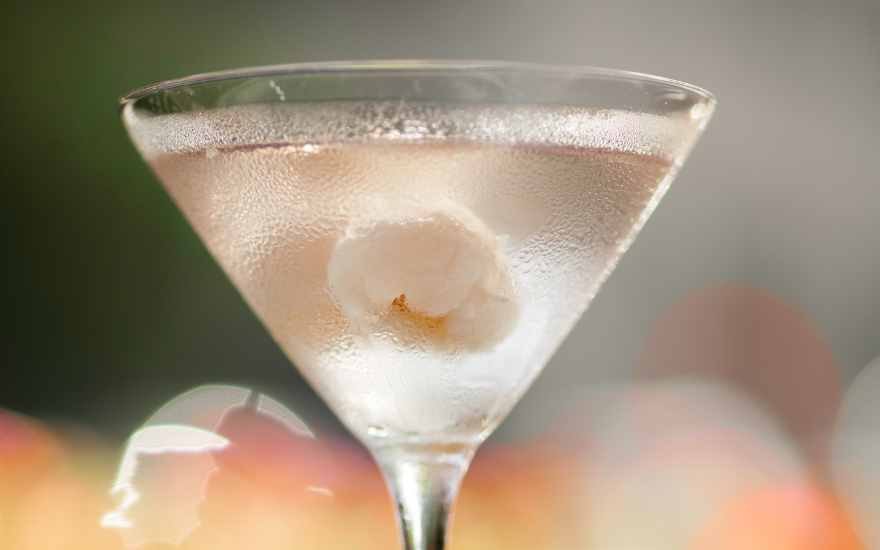We don’t often think of tea and alcohol as having much of an overlap, but maybe we should. Bartenders have been experimenting with tea in cocktails for a while now, embracing the deep and diverse flavours of all kinds of teas, as well as the refreshing qualities, caffeine, and health benefits.
Most spirits have quite intense and distinct flavours, and it’s often the same with teas, so randomly mixing them together is likely to be a waste of good liquid – though you might strike gold, who knows! There are, however, some well known tea and booze marriages that show what a dreamy and complementary pairing the two can be… and these are a few you can easily try!
When mixing tea with alcohol, you can serve it hot as you usually would with tea, or you can infuse it hot and let it cool, or you can cold brew – it’s up to your personal preference and the ingredients you’re using.
You can make tea as you usually would and treat it as another cocktail ingredient, or in its simplest form, just add alcohol to your tea, but at a slightly more advanced level, you can infuse tea into spirits, or syrups or even embrace the cold distillation techniques – all the information on those can be found here.
Black Tea and Dark Rum
Black tea, most famously English breakfast, is a great pairing with rum. The natural caramelly sweetness of the rum pairs well with the earthy, bitter flavour of black tea. It’s such a complimentary pairing that there are already a few established cocktails marrying the two. Fish House Punch, with black tea, Cognac, dark rum, and peach brandy, is a particularly boozy serve. A simpler cocktail is the Planter’s Punch, which often includes black tea instead of water, combined with dark rum and a little lime juice and syrup. There is also Gunfire, a legendary morning cocktail in the British Army of the 1890s that mixes one shot of rum into a regular cuppa. Oh, and a little tip. You might not want the caffeine of black tea in the evening, but rooibos is a very similar, slightly smokier tea that’s caffeine free, so try this!
Green Tea and Whisky
Japanese whisky, Irish whiskey, and American whiskey are all regularly mixed with green tea. Whilst it’s a slight shame to taint the endless health benefits of green tea, the vegetal and grassy flavours really add to many whiskies. The end result is a refreshing, breezier number with increased citrus notes. A simple Green Tea Highball with Japanese whisky, green tea and club soda is a great place to start.
Chamomile Tea and Gin
Flower power. The floral and herbaceous heart of both chamomile and (many) gins is a perfect marriage. You’ll find that the notes in the chamomile enhance the botanical complexity of floral and herbaceous gins, and also soften any sharpness. A really simple pitcher style cocktail you can make is by making some chamomile tea (either with tea bags or through flowers in water), and straining the cool mixture with gin, lemon juice, honey, and ice – how deliciously bright and breezy does that sound?
White Tea and Vodka
White tea is one of the most delicate and refreshing teas. It’s well known for its gentle honey notes and mellow flavours like apricot, peach, oats, hay, and flowers. You could pair this with a very subtle floral gin or perhaps even white rum, but they run the risk of overwhelming it. The neutrality and cleanliness of good vodka can be an interesting match to try, sucking you in with the gentle refreshment of the tea, and whacking you with a hearty hit of vodka. Infusing vodka with white tea would be a good way to go (you can simply leave tea leaves or tea bags with vodka for a few hours then strain). This way, you can make a simple white tea Vodka Martini, perhaps combining with some aromatic ingredients like elderflower liqueur and edible flowers.
The Hot Tea Toddy
The most famous way of combining tea and alcohol is in the form of Hot Toddies. We’ve listed some amazing variations of the Hot Toddy here, and it’s easy to see how tea can be introduced. It’s already a winter warmer, made most classically with whisky, hot water, lemon juice and usually honey and cinnamon too. But, with other ingredients like ginger, cider, gin, rum and apple juice often involved in riffs, there are plentiful opportunities for tea to bring something to the party. Ginger tea, bourbon whiskey, honey and lemon juice is a super warming, spicy, rich favourite. The tea you use will emphasise different elements of the Toddy – the citrus, the honey, the spices, or the spirit itself. At the end of the day, if you think a tea that you love might go well with a spirit, then serve it warm and combine with citrus, honey, spices and see – you might surprise yourself!
Similar but slightly different, you can also make any of your favourite teas into syrups. Syrups are simply water and sugar, and of course you can swap out water for tea. Check out our homemade syrups guide here!


















